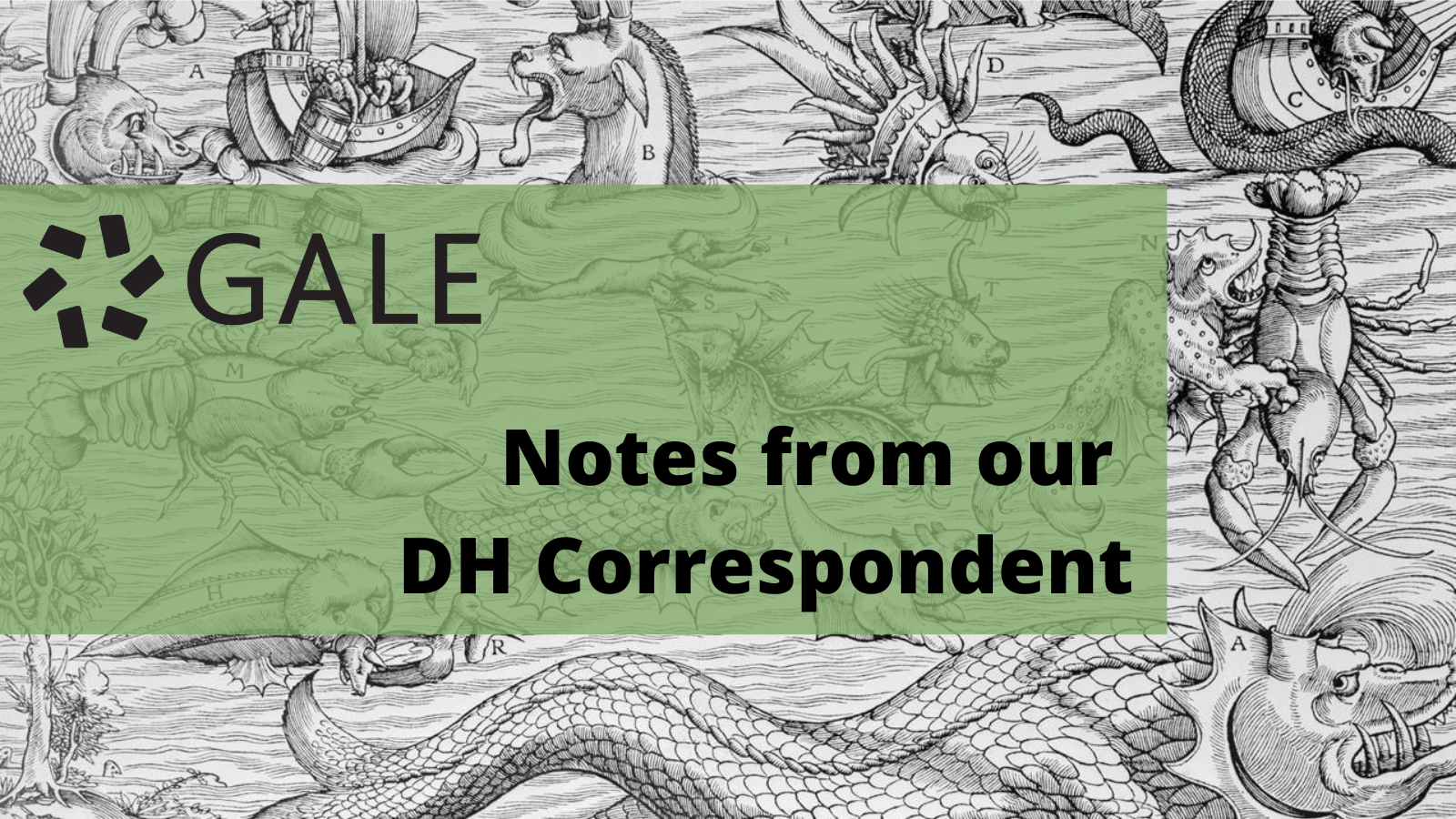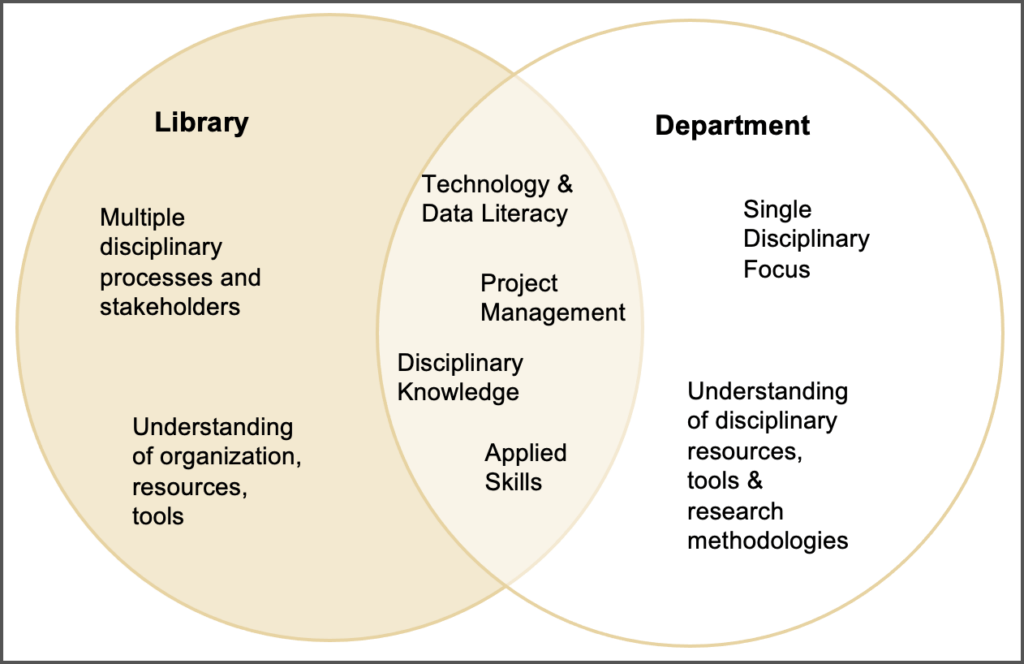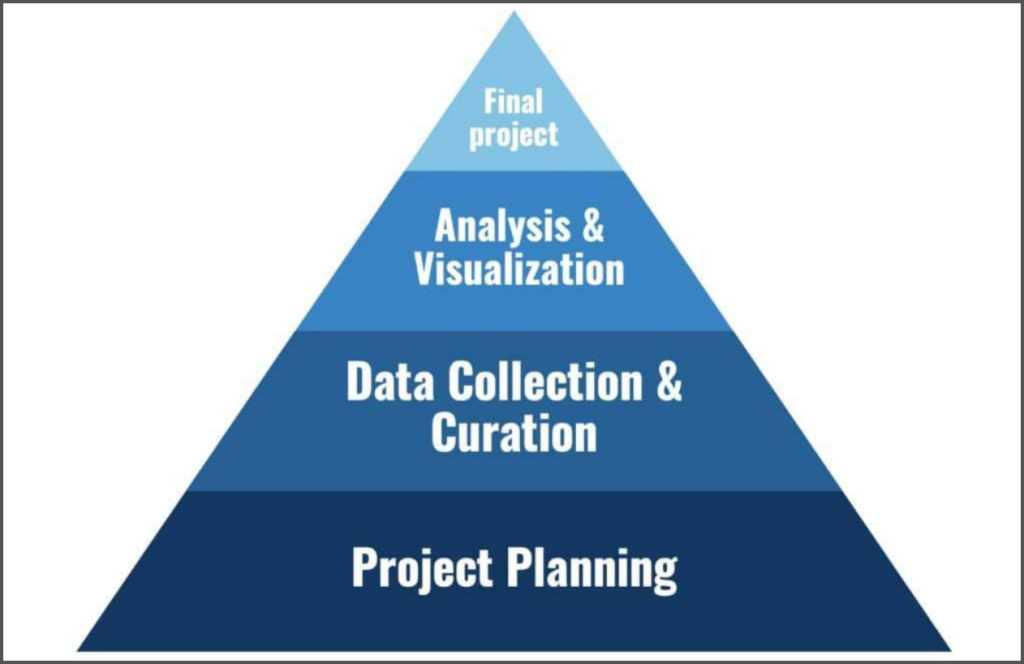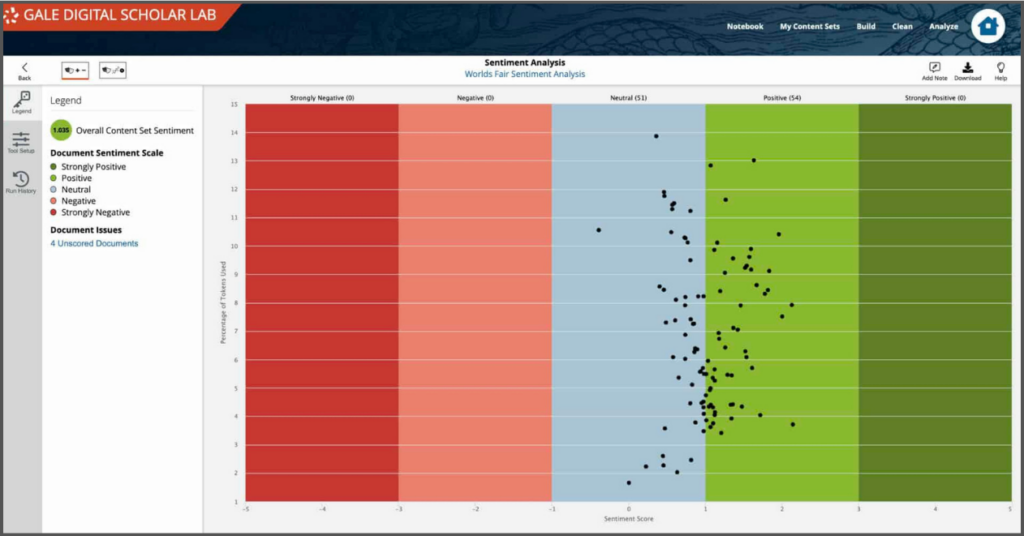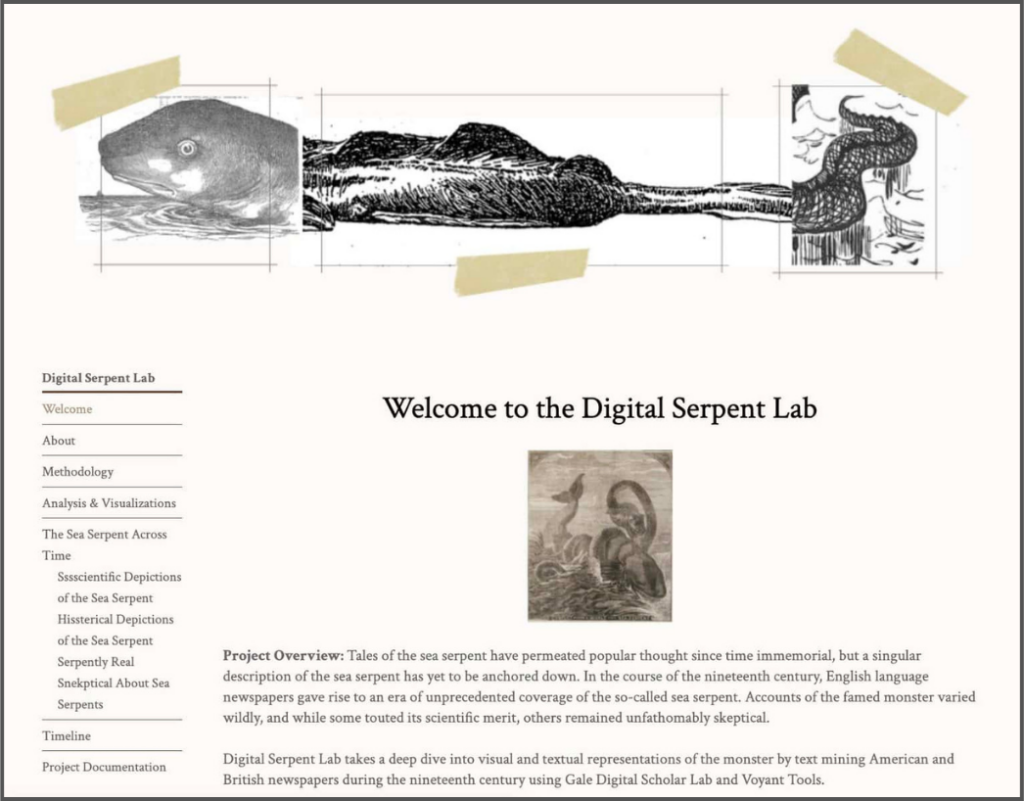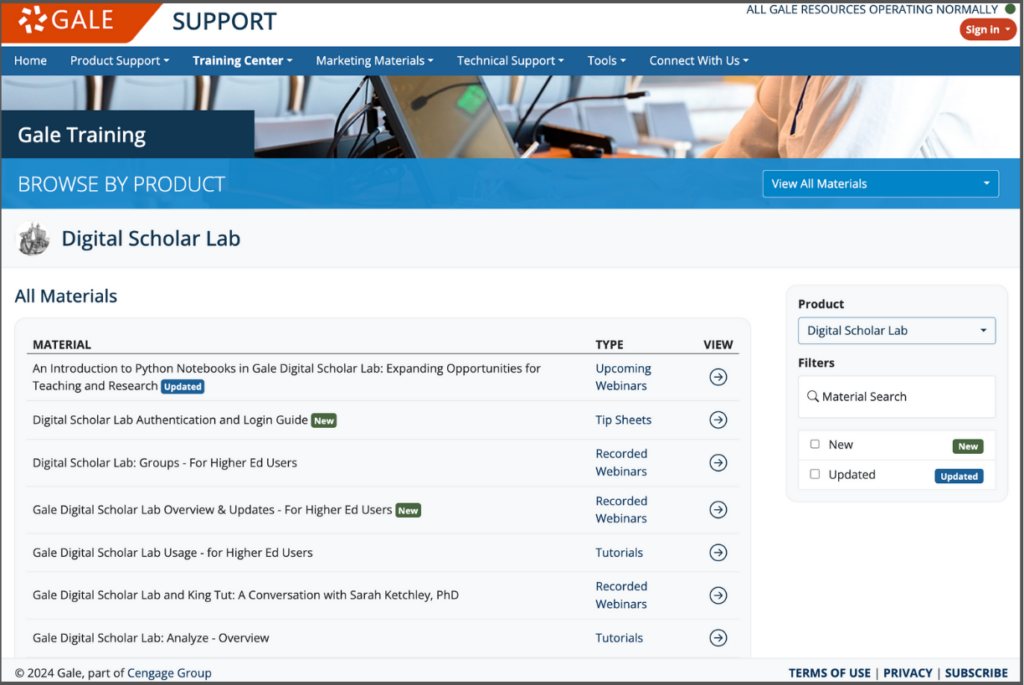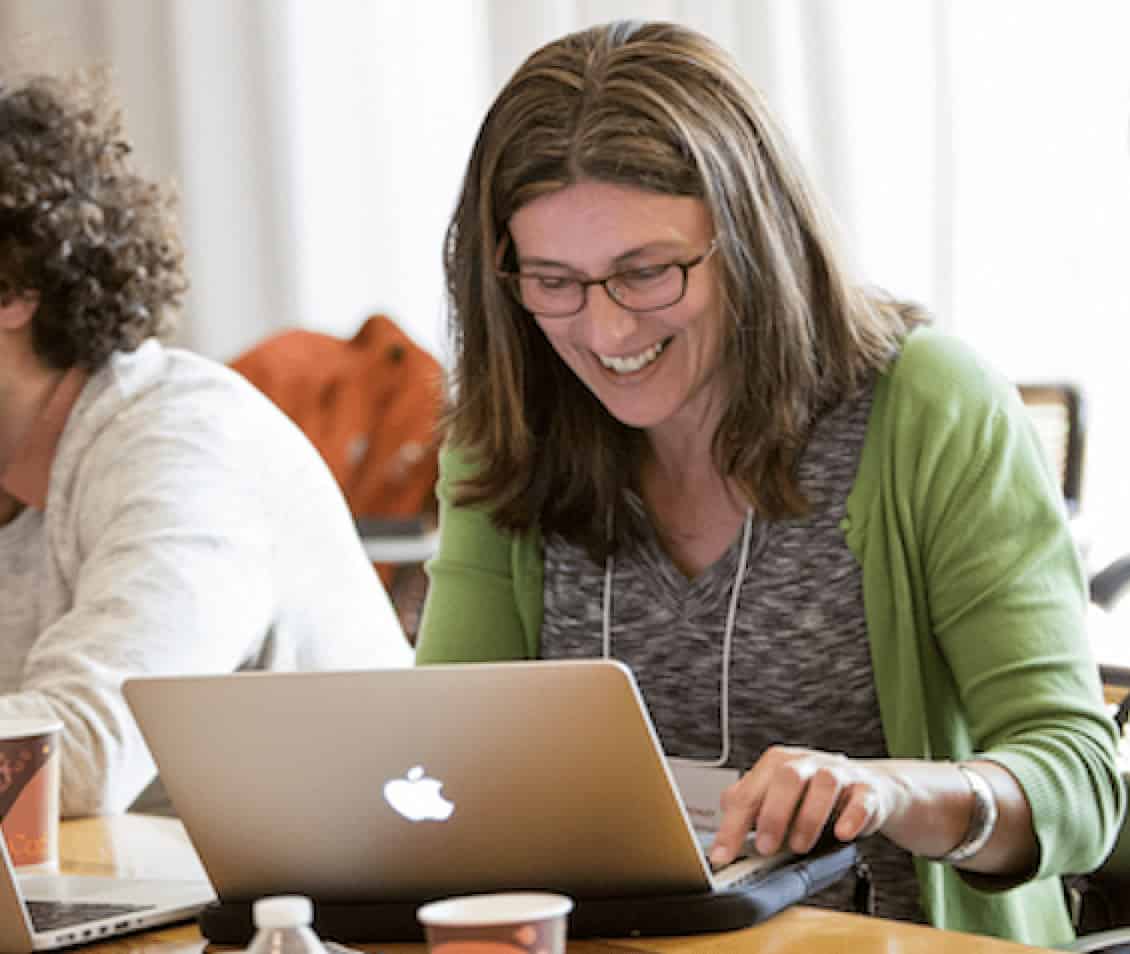│By Sarah L. Ketchley, Sr. Digital Humanities Specialist│
For the start of a new academic year, this month’s Notes from our DH Correspondent blog post is a useful resource indexing all the Notes posts to date. They are categorised below to support instructors to plan, build and deliver classroom DH curricula. This is a great page to bookmark!
Each resource can be supplemented with detailed material in the Learning Center in Gale Digital Scholar Lab which provides step-by-step instructions in written and video formats, covering every aspect of working in the platform.
Need additional support? Our DH team will be happy to answer your questions! Just email us at galedslab@cengage.com
Planning Your Course
From the earliest stages of syllabus conception and the design of learning objectives and assignments, to building out a set of classroom resources online – we offer a wide range of support materials providing inspiration and guidance for the instructor. The ‘Practical Pedagogy’ blog posts are a good starting point. You’ll learn about how to create a framework syllabus that guides students through a quarter or semester’s-worth of meaningful curriculum content.
- Practical Pedagogy with Gale Digital Scholar Lab, Part II: Approaches to Project-Based Teaching and Learning
Creating an effective DH syllabus usually involves collaboration with other faculty or staff on campus. This is discussed in:
You’ll learn about how to identify the skills or expertise you need as you develop content, and how to make connections across campus with colleagues who can provide guidance, feedback and assistance for your pedagogical work.
Organizing Your Classroom
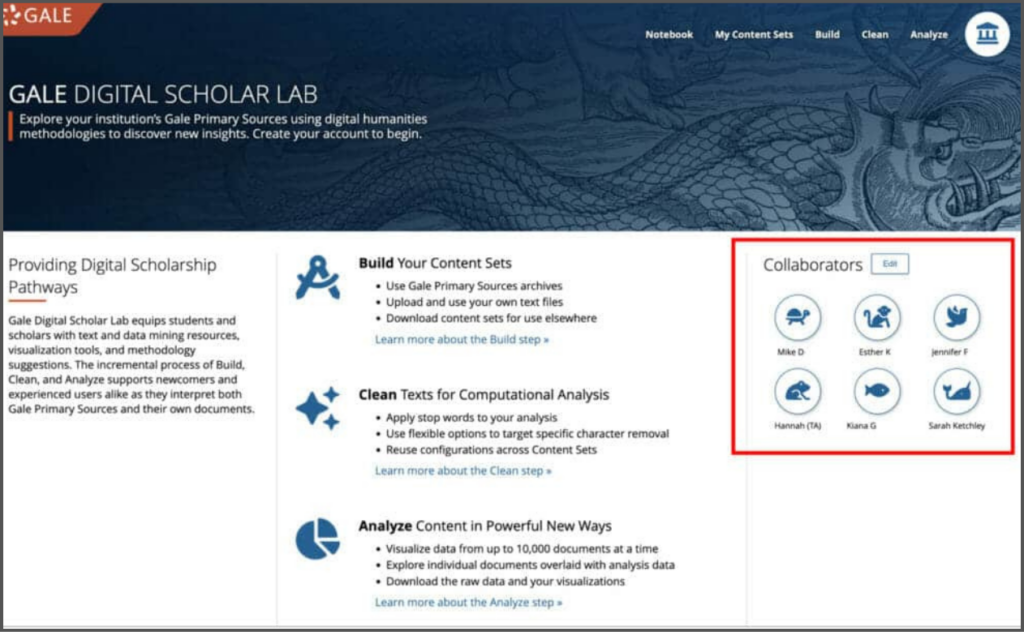
Classroom management while teaching digital humanities skills includes facilitating groupwork and providing a pathway for students to collaborate in real time and remote formats. The following posts provide an overview of how to create and manage groups in the Lab, and how to capture effective documentation for tracking student progress and creating assignments.
Digital Humanities Projects in the Classroom
A bedrock of DH work is project-building, and the Lab provides a straightforward pathway for your students to create projects which can be comprised of work they have completed within the Lab. These projects can be downloaded in PDF format for submission as classroom assignments, or they can be submitted to Gale Research Showcase for one round of expert review and publication in our open showcase.
Finding Text Data
Often, identifying and compiling textual material for students to work on in class can be challenging and time-consuming. Recognizing this, we have provided a selection of resources in the Lab to kickstart this process. Sample projects on three topics provide an end-to-end walkthrough of the Lab workflow to orient new users. We have a wide range of pre-curated datasets which can be copied to a student or group workspace for collaborative investigation.
Students can begin their primary source research in Gale Primary Sources then pull their search results seamlessly into the Lab for cleaning and analysis. And should you have your own text resources to use in class, you are able to upload the .txt files into the platform for this purpose. The Notes blog posts describing these Lab features in more detail are:
Choosing Analysis Methods
Once students have compiled their research data, the process of cleaning and analysis begins. Each tool has embedded and contextual help documentation available at every stage of the process. The Notes blog posts listed below supplement Learning Center material, providing additional context and use cases for a user to use as inspiration and guidance.
Creating Assignments
Most courses include some sort of final assignment, assessment or project which enables students to demonstrate their understanding of the material covered in class. While the traditional essay is alive and well, there are also many and varied creative options for student project-building. These include digital exhibits, story maps, timelines or interactive online narratives. Work and analysis data can be readily exported from the Lab for this purpose:
The Notes blog posts listed below provide suggestions for alternative assessment options for instructors to consider.
Finding Inspiration
One of the newest features in the Lab is our Gale Research Showcase, which offers students and early career researchers with the unique opportunity to submit projects they’ve built in the Lab to our team of expert DH reviewers for one round of review and constructive feedback. Finalized projects are published online in our open showcase repository, which provides a resume piece for students, and inspiration for a community of Lab users.
For more inspiration, the Notes blog post below describes the outcomes of a course focused on creating a digital repository of newspapers recording the opening of the tomb of King Tut, in 1922:
Staying Connected and Building Community
The DH community is renowned for its willingness to engage in debate and constructive collaboration. There are ample opportunities for skills development and community-building. Some suggested conferences and workshops are provided in this blog post:
And finally!
A final recommendation for learning about teaching and research with the Lab is the support.gale.com website. Here you will find an extensive library of recorded webinars on topics ranging from full walkthroughs of the Lab workflow to deep dives into individual tools. There are discussions of groupwork, projects and the Gale Research Showcase, which can be provided to your students as reference material to support their work in class.
You’ll find this invaluable resource here.
If you enjoyed reading about Digital Humanities Resources check out these posts:
- Using Large Language Models for Post OCR Correction of Nineteenth Century British Newspapers
- A Two-Way Relationship – Collaborating with Scholars in the Gale Fellowship Program
- Plans, Charts, Images and Drawings: Eighteenth Century Collections Online as a Source of Visual Information Transmission

